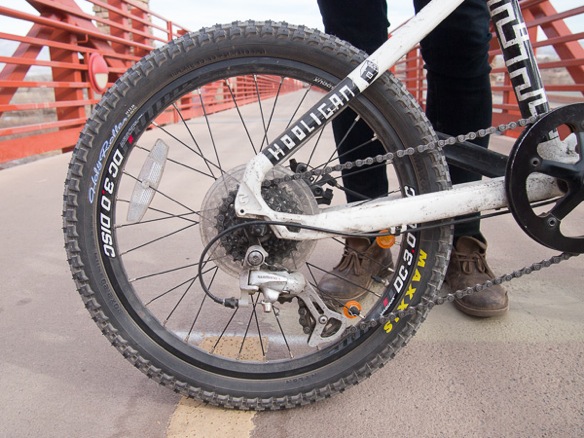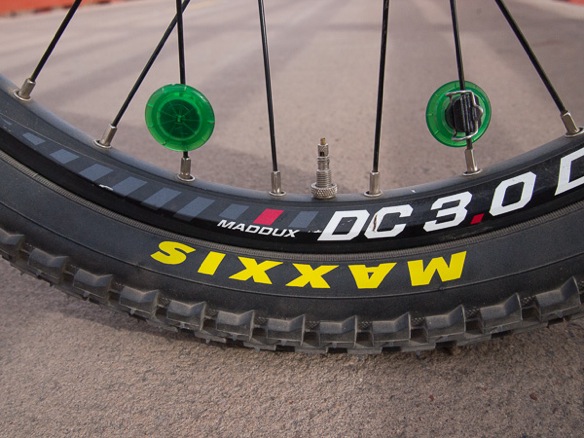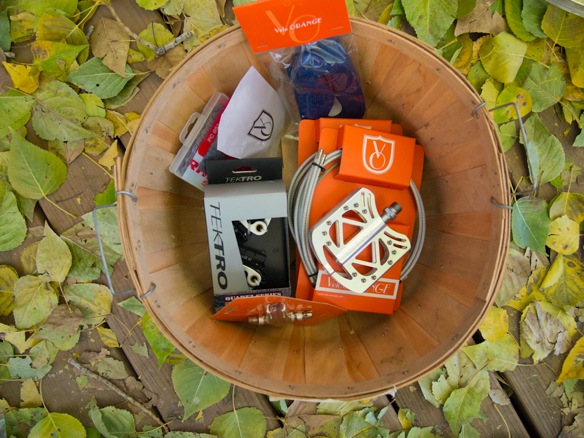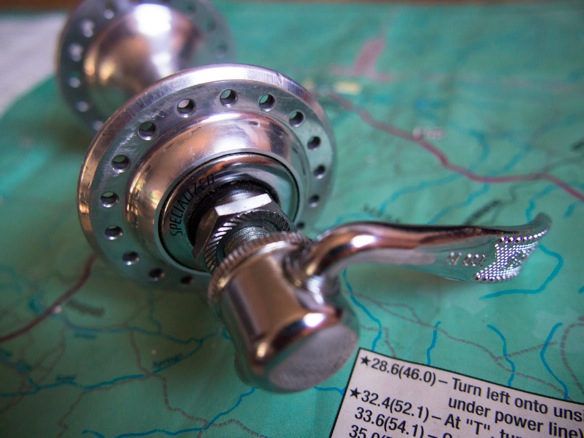
A kitchen and a mailbox are perhaps the greatest features of living in town. A bed is overrated, as is multiple bike ownership. Jobs are alright, for a time.
In the past few weeks, I’ve been lucky to receive many interesting things in the mail, including correspondences from old friends, kind offers from new friends, and a few items ordered from faraway. Somehow, I’m swimming in stickers.

From Portland, OR
A friend in Portland sent a handwritten letter with updates. We talk about new bikes, old bikes, and bike trips, mostly. Shawn Granton is the illustrative genius behind many notable comix and zines related to bicycles, Portland, and travel. He’s the guy behind the Urban Adventure League blog, the Zinester’s Guide to Portland, and the Bicycle Touring Primer. He has also crafted many illustrations for local Portland bicycle events, and is a regular contributor to Bicycle TImes. His wit ranks alongside his wisdom about bicycles and his craft with the pen. Included is a self-made sticker which reads “NO, I don’t have a D.U.I. I just like riding my bike”. Thanks Shawn!

From Missoula, MT
A friend from the Adventure Cycling Association has been kind enough to send maps of their first bikepacking route. The Idaho Hot Springs Mountain Bike Route (IHSMBR) promises over 500 miles of dirt roads and trails, with over 200 miles of singletrack asides, including access to over fifty hot springs en route. Secret springs are rumored to also exist along the route, if you can find them. This route is the the result of much hard work and research, especially by ACA cartographer Casey Greene, who is also an expeditious Montanta bikepacker, packbiker, and photographer.
In contrast to the Great Divide Route, the IHSMBR promises to be a true mountain bike route, complete with epic climbs and descents, and some hike-a-bike. Knobby tires are necessary and panniers are not advised. This is my kind of route!
The design of these maps make a great leap beyond those found on other ACA routes. Due to the non-linear path of this route, it borrows from a broad-scale map format, as used on the Divide maps, but includes many of the features you see on other popular adventure maps, such as those in the National Geographic Adventure series. Genuine topographic details, relief shading, and a unique font choice carry these guides into the future. All photos by Casey Greene as well. The details of the new maps are described in detail on the Adventure Cycling Blog.
Lael and I are looking at ways to include this route into our summer plans. So many places to go!




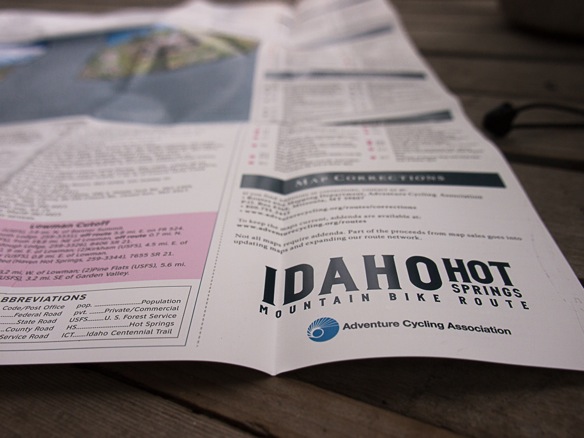
From Minneapolis, MN
Contributors to Bunyan Velo volunteer their time and donate their experiences and images to the magazine. Occasionally, an envelope will arrive from Minnesota with a couple of stickers and a thank you note from editor Lucas Winzenberg. I’ve worked with Lucas in some capacity on all four issue this past year, and am grateful for the chance to reach so many new readers, and to share the kind of riding we do. The whole thing is growing– the riding, the writing, and the readership– tell your friends about Bunyan Velo! Issue No. 4 is out now.
A few weeks ago, I received this Bunyan Velo stem bag and a wold cap made by Randi Jo Fabrications, which is really just one woman in Oregon named Randi Jo. In addition, I’ve got enough BV stickers that Lael thought they would a suitable replacement for a broken ziptie on her Mukluk. The “Get Rad” patch has yet to find a home, but I have an idea.


From Annapolis, MD

These Crazy Bars come from Velo Orange, headquartered in Annapolis, MD. The concept of multi-position handlebars has grown popular over the last few years, as have alternative mountain bars featuring 20-50degree bends (also called alt bars or mountain comfort). This bar blends the two concepts with a 666mm width at a 45deg angle for the main grip position. The forward sections are designed to replicate the comfortable semi-aero position on the hoods of a road bar. The concept on paper, is brilliant. In person, the bars look a little nutty. They are so wild looking, in fact, they’ve attached the designers name to the bar. Casey’s Crazy Bars are described in greater detail on the VO Blog.
I’ve thought about which bike will get these bars first. It will be either the Surly ECR or the Shogun Prairie Breaker, although I think I prefer a slightly wider bar on the ECR due to the oversize, over-wide wheels (29×3.0″). Additonally, I’ve decided the current position on the Shogun is too upright, as a steel touring bar is currently affixed. This bar may help, with the option to use the forward position on crosstown sprints to work.
From Calgary, AB, Canada

It has been a few weeks since I received this custom framebag from Scott Felter of Porcelain Rocket. While the bag is filled with clothing and food on a daily basis, I’ve finally found the opportunity to get out for a multi-day trip. More details on our ride up Resurrection Pass soon!
Also from Missoula, MT

I am proud to be the first official customer of Wanderlust Gear, a new project for Paul Hansbarger of Missoula, MT, also an ACA employee. He has years of experience designing and making gear under the name Hans Bagworks. This Beargrass top-tube bag is Made in the USA and features a simple, lightweight design. Removable plastic stiffeners are included to stabilize the side panels of the bag. I am especially interested in the Rattlesnake stem bag, which claims to hold a standard water bottle and some snacks, a 32oz Nalgene, or even a 40oz. Klean Kanteen. Remarkably, both bags are priced at $35, a sign that competition in the industry is good for consumers. Paul also makes custom framebags ($140+) and insulated pogies in his Missoula shop. More products are to be released as winter fades to spring.

The all-important MUSA tag.
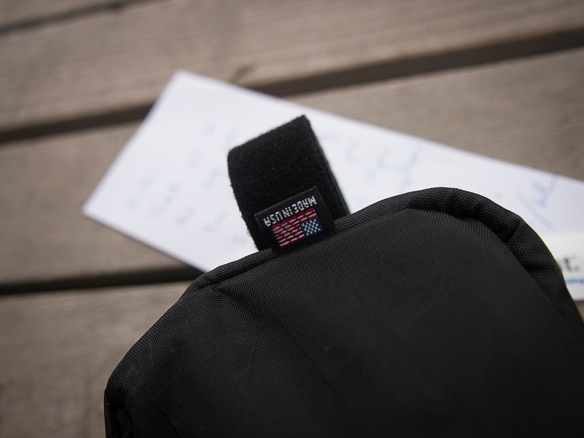
From 45NRTH

These didn’t arrive in the mail, at least not to me personally. I purchased these from The Bicycle Shop, where I work. While the Schwalbe Ice Spiker Pro is the best bicycle ice tire on the planet (without question), I was curious to try this new offering from 45NRTH, a new company from Minneapolis, MN, a sibling in the QBP family. The 29×2.35″ Nicotine tire is a touch wider than the 29×2.25″ Ice Spiker Pro, with more pronounced blocky knobs on the outside. I was hoping to retain as much flotation at possible on 50mm wide Rabbit Hole rims on the ECR. Unfortunately, the 222 studs do not inspire confidence in truly icy conditions, and while each stud features a concave design which claims more “edges”, any studded tire that doesn’t make a lot of noise isn’t doing its job. The result is a decent mountain bike tire with a little extra bite on the ice. A poor ice tire is an easy habit to kick. The volume of the tire is notably smaller than the 3.0″ Knard it replaces, as expected. Hey 45NRTH, how about 400+ studs per tire next year?
The Schwalbe Ice Spiker Pro features 402 studs per tire (29″ version), with a similar lightweight folding casing. The Ice Spiker is also tubeless ready, officially, and the Nicotine warns against tubeless use, although it may be possible.

Lots of knobs, not a lot of studs. Each stud is only slightly raised from the tire. At least, it would be nice to mold extra stud wells into the tire to allow custom studding as needed. 400+ studs please!

On smooth glare ice, the studs do catch some traction, but not enough to really be safe on off-camber sidewalks and rutted alleyways. This skid is at 12psi, riding at about 8mph. Lael has ridden this bike, and has enough bruises to cash in for some Schwalbes, I think. The Grip Studs on my Mukluk are more effective. As a result, I ride the Mukluk almost every day.

The Surly ECR frame features gaping clearances with 29×2.35″ tires, something I like to see, leaving lots of room for mud, and enough room to keep it out of the drivetrain. While the BB is lowered with the smaller tires, for commuting and normal touring it rides very nicely (lest I be called an internet-arm-chair-engineer). Still thinking a Krampus is more my style, or a Krampus-inspired 29+ Mukluk.

From Grand Rapids, MI

To that end, the 45mm Velocity Dually 29 rims might be just the ticket to turn a Mukluk into a 29+ bikepacking beast. These high polish USA-made rims feature a doublewall construction, and a tubeless ready design. They are yet to be built, as I decide which hubs will be used. The main concern is whether I prefer to ride a rigid 29+ bike or a suspension fork with 2.4-3.0″ tires up front. One build would use a 135mm fatbike specific hub, while the other would use a 100mm hub, possibly with a 15mm thru-axle on a suspension fork. A dynamo is also part of the equation. Knards look awesome on the Duallys.
Revisiting Ukraine

We’ve all been reading about the events in Ukraine. As a result of my Ukrainian heritage and our recent travels in Ukraine and on the Crimean Peninsula, I have a unique interest in the Ukrainian story. I have some beautiful images from our time in Ukraine which I haven’t shared. As I revisit them, I am moved by the experience in contrast to the fiery images streaming through major media channels. My family (from NY) visited Ukraine with us for ten days, in which time we met long-lost family members in villages on either side of the country, and celebrated 22 years of Ukrainian independence in the central square in Kyiv. Above, the Maidan Nezalezhnosti or Independence Square, the current site of the protests and violence in Kyiv, quietly buzzing with celebratory energy on August 24, 2013.





































